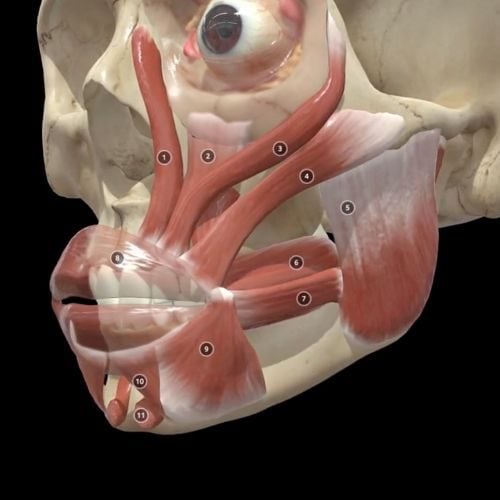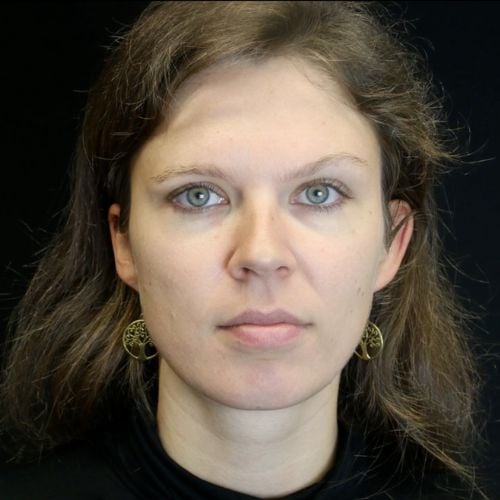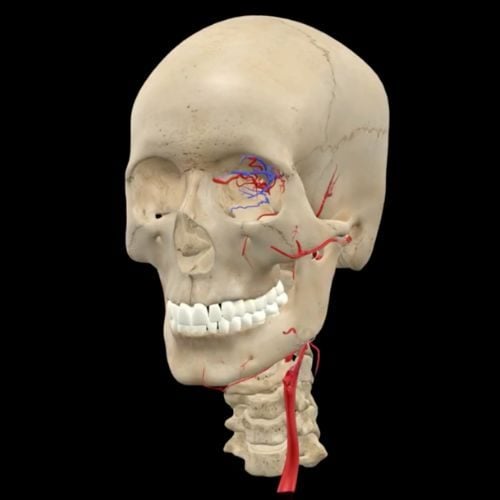- Mail us: support@drtimpearce.com
Are we overdosing with hyaluronidase? Interview with Dr Patrick Treacy
You may be interested
 Dr Tim Pearce
Dr Tim Pearce
 Recent media coverage has reported on the experience of some patients who are claiming side effects from the use of hyaluronidase in medical aesthetics. This has led to debate within the specialty on the veracity of such claims, alongside the best practice protocols for hyaluronidase use, especially in the emergency management of vascular occlusions, and whether aesthetic practitioners are using too much hyaluronidase.
Recent media coverage has reported on the experience of some patients who are claiming side effects from the use of hyaluronidase in medical aesthetics. This has led to debate within the specialty on the veracity of such claims, alongside the best practice protocols for hyaluronidase use, especially in the emergency management of vascular occlusions, and whether aesthetic practitioners are using too much hyaluronidase.
On 7th December 2021, Dr Tim Pearce hosted a Live on Instagram and interviewed renowned Irish cosmetic doctor and aesthetic medicine pioneer Dr Patrick Treacy from Ailesbury Clinic in Dublin to discuss his lengthy experience with the treatment of complications and hyaluronidase use in aesthetic medicine.
In this blog, Dr Tim highlights some of the stand-out learning points from his lengthy discussion with Dr Patrick and invites you to catch up with the whole interview now hosted on You Tube as part of the Aesthetic Mastery Show.
Dr Tim will be discussing more medical aesthetic training tips as part of his upcoming webinar series, so if you’re looking to increase your CPD-certified learning and want to learn more skills to make you a better practitioner, then step one is to register for the free webinars by Dr Tim.
Survey: how many vials of hyaluronidase are aesthetic clinicians using for vascular occlusions?
 Dr Tim ran a survey, prior to the interview, to find out how many vials of Hyalase® aesthetic clinicians are routinely using when treating a vascular occlusion (VO).
Dr Tim ran a survey, prior to the interview, to find out how many vials of Hyalase® aesthetic clinicians are routinely using when treating a vascular occlusion (VO).
637 people responded reporting having treated a VO, with approximately 76% reporting using 1-2 vials of Hyalase®, 17% using 2-4 vials, and 2.6% using over 8 vials or 12,000 units of hyaluronidase. The survey did not gather data on the time periods or intervals for this use.
History of hyaluronidase use for complications in aesthetic medicine
Dr Patrick Treacy has been performing dermal filler treatments since 1996 and using hyaluronidase for over 20 years; he noted that his early use was not in the management of VOs but for the correction of over filling with hyaluronic acid (HA) based fillers. Without any protocols in place at this time, he had to establish his own parameters on the safe and effective unit dose of hyaluronidase. As his practice grew in the early 2000s, Dr Patrick found himself treating more and more American patients who flew in for HA fillers at a time when these products were not authorised for use by the U.S. FDA and collagen was the prevalent option at American clinics.
By the time more practitioners started to experience issues with vascular occlusions following the increased use of dermal fillers globally, Dr Patrick had already honed his protocol, in around 2007, although it received a mixed response.
In 2011, he was part of an expert panel at a conference in Las Vegas with American clinicians Dr Claudio Delorenzi and Dr Steven Dayan where he was expounding the use of 1500 units of hyaluronidase. This seemed unheard of, and left his American colleagues astonished – it took some years later, and a paper published by Dr Delorenzi in 2014 for the penny to drop on why Dr Patrick’s proposed protocol appeared extreme to his American colleagues. They were using Hylenex® (available as 150-unit vials of hyaluronidase) and not Hyalase® (1500-unit vials), the brand of choice in the UK & Ireland.
The change in practice in the USA and the move away from animal-derived and collagen-based dermal fillers towards non-animal hyaluronic acid began to happen towards the mid-2000s. Yet, Dr Patrick still found himself in demand as his American colleagues lacked the experience that he had honed over the proceeding decade. Since this time, across the globe, the incidence of VOs has increased, along with the need for experienced-based protocols in the use of hyaluronidase. Dr Patrick lays some of the blame for this increase on the addition of lidocaine for patient comfort to many of the HA-based dermal filler products in current use, which increases vessel dilation; plus the growth in the number of differing practitioners now providing dermal filler injections, including those without a medical background.
How much hyaluronidase should you use when managing a vascular occlusion?
 Dr Patrick is now concerned that with increases in the use of hyaluronidase alongside rising emergency situations, he regularly hears reports of aesthetic practitioners using 15 to 16 vials of Hyalase® during the management of vascular occlusion and compromise. Regularly questioned if this protocol is appropriate, he is concerned about the lack of knowledge in the sector, and this sparked his desire to discuss his concerns with Dr Tim on their Instagram Live.
Dr Patrick is now concerned that with increases in the use of hyaluronidase alongside rising emergency situations, he regularly hears reports of aesthetic practitioners using 15 to 16 vials of Hyalase® during the management of vascular occlusion and compromise. Regularly questioned if this protocol is appropriate, he is concerned about the lack of knowledge in the sector, and this sparked his desire to discuss his concerns with Dr Tim on their Instagram Live.
Having treated and advised on thousands of VOs, Dr Patrick explained that he has never used more than two vials of Hyalase® and believes aesthetic practitioners are making several mistakes in their approach to the use of hyaluronidase. If they refer to clinical papers or guidance published by American clinicians, they may see reference to using upwards of 10 vials of hyaluronidase without realising the difference in the units per vial between Hylenex® and Hyalase®. He also believes that there is a misunderstanding that if you keep injecting hyaluronidase, suddenly you will achieve clearance, thus the temptation is to keep adding more and more; however, he notes that clearance can take days, so large quantities initially are a misnomer.
He went on to explain that he has never seen any long-term problems as a direct result of hyaluronidase use in aesthetic medicine, despite recent reports from patient support groups on Facebook.
Managing necrotic tissue when vascular occlusion has remained untreated
If a patient has not received swift restoration of the blood supply within 24-48 hours of a VO, as is the case with many of the patients that are ultimately referred onwards to Dr Patrick, often 8 to 10 days post-treatment, his protocol for managing what becomes severely compromised tissue extends beyond the use of additional hyaluronidase.
Hyperbaric oxygen chamber
This forces oxygen into the vascular compromised tissue. Dr Patrick believes it is cost effective to use and readily available at many hospitals. He reported that he has successfully reversed impending necrosis and fully necrotic tissue in cases up to two weeks post initial treatment with the use of hyperbaric oxygen. He also recommends its use within the first couple of days of a vascular compromise.
Platelet Rich Plasma (PRP)
Within necrotising tissue, the healing cascades are missing, thus the use of growth-factor rich plasma can direct all the components needed for tissue healing directly to where they are required following a vascular injury. Dr Patrick noted that this also helps with the avoidance of scarring in these cases.
Why do vascular occlusions get missed?
Dr Patrick explained some common mistakes made when assessing tissue viability. He referred to reticular formation, which is hyperaemia, the body responding and trying to recruit other vessels to open and profuse the area. However, this blue, violaceous colour can be mistaken for a bruise and the practitioner may simply prescribe aspirin. This is not a thrombotic effect, but an embolic effect, so clinicians should be dissolving the filler first. Similarly, if tissue sloughing is noted, this is commonly mistaken for an infection and antibiotics are prescribed, thus the occlusion remains undiagnosed.
Dr Patrick worries that this leads to patients being overly loaded with therapeutic and pharmaceutical interventions when hyaluronidase and possibly hyperbaric oxygen would be the most effective solution. He also advocates the use of oral nitrates, like Cialis® in these cases.
Top tips from Dr Patrick Treacy for managing a vascular occlusion
- Always use hyaluronic acid-based dermal fillers when treating near vascular structures, particularly facial arteries. Non-HA products can be appropriate for use away from these areas.
- Do not panic. You have control over the situation if you have used an HA filler because you can use hyaluronidase.
- Agitate the tissue. This will help you to see if the embolism will simply move on.
- Warm the tissue. Use a hot water tap or microwave to warm some gauze which can be applied to the area, again to see if the embolism will dislodge.
- Start counting Capillary Refill Time (CRT) to assess the level and severity of compromise to the blood supply.
- Seek help, advice or support from a colleague, mentor, or complications expert for additional guidance and reassurance whilst you treat the patient.
- Make your Hyalase®. Dr Patrick advocates reconstitution of Hyalase® with 1ml of bacteriostatic saline, then withdrawing 0.5ml from that and adding further bacteriostatic saline, thus 2mls created has 1500 units of hyaluronidase meaning for every 0.1ml there is 75 units. You may also use 0.5ml of lidocaine (not Xylocaine which contains adrenaline, a vasoconstrictor) to make up each 1ml of Hyalase®, to add vasodilatory action. The full 1500 units can be given in one session, or by having two 1ml syringes, treatment can be performed in split sessions within 24 hours, allowing time for the hyaluronidase to work and for reassessment some hours later.
- Treat with Hyalase®, approach the compromised vessel both proximally and distally, tracking its path, delivering 10 injection points, 75 units or 0.1ml per site, and then give it time to work. Dr Tim Pearce has helpfully created a downloadable template for a hyaluronidase consent form which is useful to help you to explain the risks to your patients.
- Do not panic. Do not expect immediate clearance, it will clear. Arrange to see the patient again within a time frame that makes you both feel comfortable but reassess within 12 hours. At that time, you can treat with an additional 1ml of your reconstituted Hyalase®, if required. If you want to check CRT again for reassurance, before the patient leaves, you can; however, Dr Patrick believes you need to give the hyaluronidase time to work and then reassess the CRT when you see them again, because you are unlikely to get an immediate change in the CRT.
- Always be at the end of the phone. Give your patient the reassurance that you are still actively treating the problem and they can reach you at any time.
- Expect it to get worse before it gets better. Counsel your patient that this will likely get worse for them over the coming 24-72 hours, but it will resolve, and the tissue will begin to return to its normal colour and state, with most incidences of vascular occlusion clearing completely within 5 to 7 days.
He concluded that if you are tempted to keep adding more and more hyaluronidase, you are very unlikely to see the tissue magically coming back to normal. Those with fewer years’ experience in medical aesthetic practice will not see many cases and the uncertainty can be unnerving, but remember, the patient will be fine, and you can always seek extra help and guidance from your medical colleagues, trainers, and complications experts until you build up the knowledge yourself. Be sure to avoid the panic.
It’s true that Dr Tim and Dr Patrick’s approaches to the use of hyaluronidase do differ, so for an additional viewpoint, why not read Dr Tim’s blog – Vascular occlusion: how much Hyalase (Hyaluronidase) do you really need?
You can follow Dr Patrick Treacy on Instagram for more of his insight on aesthetic medicine, and you can also buy Dr Patrick’s autobiographical book, The Needle and the Damage Done from Amazon
Aesthetics Mastery Show
HYALURONIDASE OVERDOSE? Dr Patrick Treacy thinks we’re using too much
This blog follows our recent Aesthetics Mastery Show, in which Dr Tim Pearce interviewed Dr Patrick Treacy – who has treated 100s of vascular occlusions – has some concerns about the impact this could be having on patients. Watch the full Aesthetics Mastery Show here.
Are you still anxious about delivering cosmetic injectables safely?
If you want to learn more about mastering medical aesthetic treatments and complications or conquering the anxiety of where to place your needle, then register for the next Dr Tim webinar.
Subscribe to our YouTube channel for really useful regular tips and advice. ![]()
Dr Tim Pearce eLearning
Dr Tim Pearce MBChB BSc (Hons) MRCGP founded his eLearning concept in 2016 in order to provide readily accessible BOTOX® and dermal filler online courses for fellow Medical Aesthetics practitioners. His objective was to raise standards within the industry – a principle which remains just as relevant today.
Our exclusive video-led courses are designed to build confidence, knowledge and technique at every stage, working from foundation level to advanced treatments and management of complications.
Thousands of delegates have benefited from the courses and we’re highly rated on Trustpilot. For more information or to discuss which course is right for you, please get in touch with our friendly team.
Related Articles
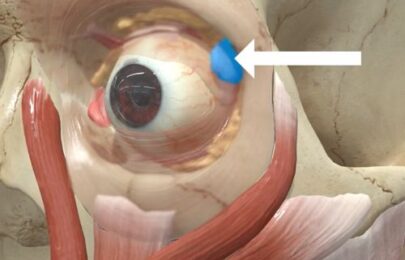 Bestseller
Bestseller
Avoiding Botox Eye Complications From Dry Eye to the ‘Psycho Look’
September 30, 2025
Avoiding Botox Eye Complications From Dry Eye to the ‘Psycho Look’
 Bestseller
Bestseller
How to Fix a Crooked Smile with Botox
September 25, 2025
How to Fix a Crooked Smile with Botox
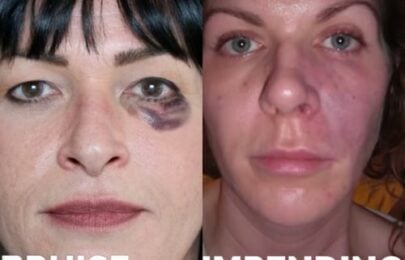 Bestseller
Bestseller
Multiple Causes of Vascular Occlusion and Necrosis
September 23, 2025
